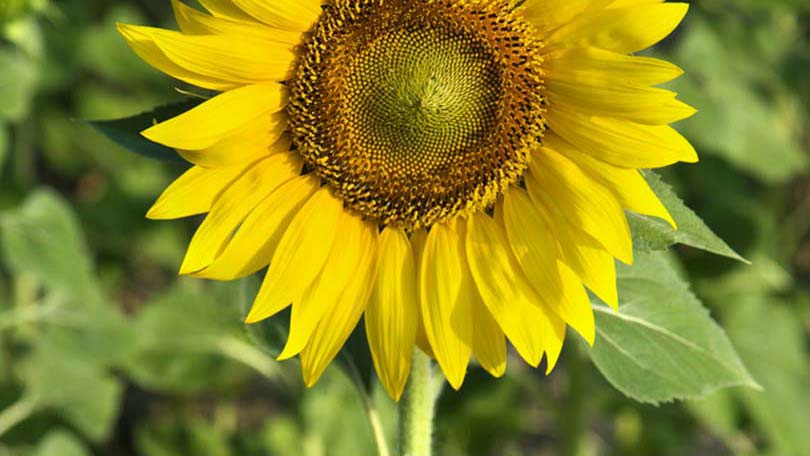
Does the bright face of a golden sunflower cheer you up? Did you plant hundreds of the sunflowers seeds, so you could be continuously cheery, but realize that now you need to thin them out? Or maybe some just popped up in the wrong location. Never fear, you can move your beloved sunflower to an appropriate place safely, and enjoy its beauty for the rest of the season.
There are over sixty varieties of sunflowers. Each one has specific needs for growth and care, but the basics are all about the same. You’ve planted the seeds, whether indoors or out, and now need to transplant or thin them out in the garden. The process will take a little time, but should result in undamaged sprouts or flowers in the end.
When Transplanting Seedlings
Seedlings are very delicate until several weeks when the stem grows thicker and develops in to a stalk. When you are moving them from a germination flat from indoors to outdoors, you will need some special care. Pick a location that receives full sun or only partial shade for the best results. Do not plant outdoors until all danger of frost is gone, as the cold will freeze the tender stems and they will die and not regrow.
Begin by digging small holes where you would like your seedlings to go. Make sure they are adequately spaced so the roots will have plenty of room to grow. You don’t want to have to re-transplant them again in another month by spacing them to close together. Dig a hole about two or three inches in to the ground. Work the soil so it is loose and the roots can take hold and latch on, on the sides and bottom of the hole.
Position the sunflower in the center of the hole and cover with soil. Pat gently so the soil is firm and will keep sunflower in place. Water the area to give the roots extra help in growing and repairing themselves from the transplant.
If your seedlings are small and don’t stand up on their own, you might want to use a stake. You can buy metal or wood ones and prop next to the seedling or tie it with some string. Popsicle sticks and wooden stakes cut down to the size of the seedling work best. The stakes will also protect against heavy rain and high wind damage.
And like all young sprouts, they will attract wildlife. Rabbits especially like to eat the tender green stems of sunflowers. Its not uncommon to have a beautiful row or two of sprouts emerge, grow to six inches tall, and then be completely mowed down overnight by a hungry rabbit or deer. A fence made of wire or mesh might keep them out, at least until the seedlings can grow tall enough where the rabbits lose interest. A fence would need to be at least eight feet tall to keep deer out, and then it isn’t even a guarantee. Human or animal hair placed near the seedlings may also repel their interests.
When Transplanting Older Plants
When digging your sunflower up, make sure to give it wide berth. If you dig too close to the stalk, the roots can be damaged and your beloved flower might not recover. The farther out you dig, the more roots will remain on the stalk. Dig straight down to go deep and avoid cutting the largest roots. Shake off excess dirt if it is too heavy to carry to the new location.
Pick your location and dig a hole about six to eight inches deep, and at least that in width, depending on the exact age of your plant. It is has a lot of roots, dig even deeper so they have adequate room to grow. Loosen the dirt around the area so the roots have air and can latch hold easily.
Place the plant in the center and cover with dirt, packing it down to hold the plant firmly in place. Give it lots of water so the roots can recover from the trauma of being removed. A grown plant should not require stakes if it is planted deep enough.
Care
Sunflowers don’t require fertilizer while they are growing in normal conditions. If you have an unusual soil type, you may consider it, but do it lightly. Sunflowers are hardy plants, but chemical interference may do them in.
After a sunflower has bloomed, birds will start to notice it and the seeds within the center. Keep the sunflowers up until the next planting season, so the birds have an abundant food supply all winter long. Cut the heads or pull the entire stalk out of the ground when the seeds are all gone. Begin your new crop for the new season!

